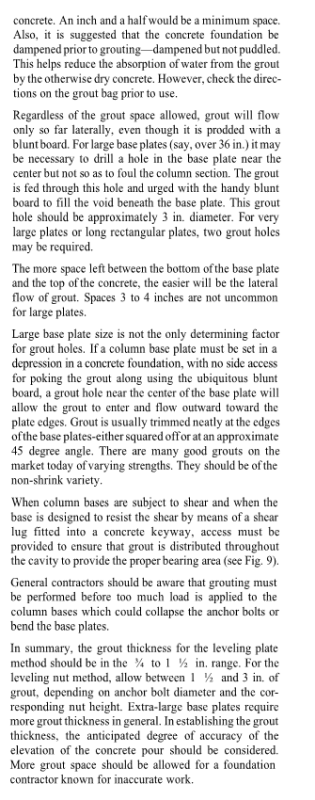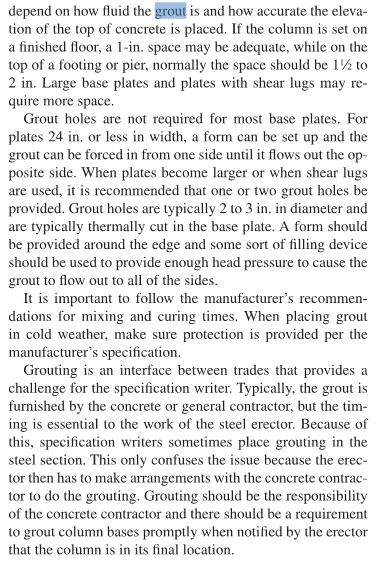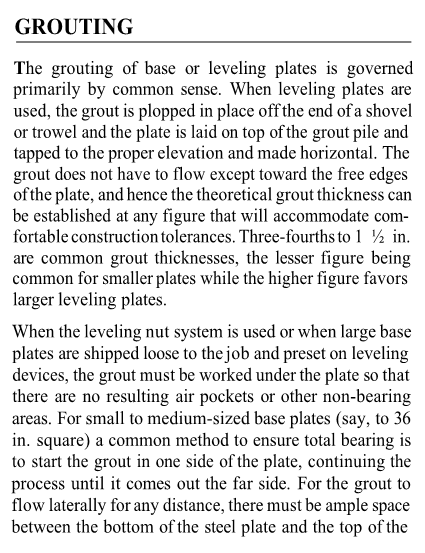StructureMan44
Structural
- Dec 10, 2014
- 201
What determines the required thickness of grout below a column baseplate? Do any standards (AISC, ACI, etc.) specify a range based off column load or baseplate size?
Follow along with the video below to see how to install our site as a web app on your home screen.
Note: This feature may not be available in some browsers.



